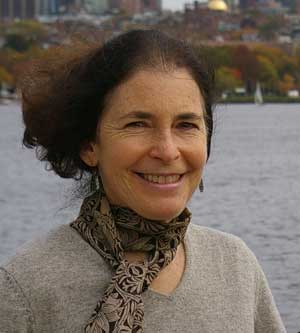Imagine Boston 2030 book review: Glenna Lang on 'The Death and Life of Great American Cities'
When Jane Jacobs’s impassioned, groundbreaking book, "The Death and Life of Great American Cities," first appeared in 1961, more than half a century ago, it defied and shocked city planners, urban experts, and architects.
When Jane Jacobs’s impassioned, groundbreaking book, "The Death and Life of Great American Cities," first appeared in 1961, more than half a century ago, it defied and shocked city planners, urban experts, and architects. Jane Jacobs wrote her book in response to the accepted thinking and policies of the post-World War II era. Many people thought that cities had reached a crisis point, and the best way to deal with the problems – such as rundown areas and crime – was to tear down swaths of aging neighborhoods and replace them with large-scale modern buildings surrounded by empty space. They called this approach “urban renewal.” Jacobs attacked these experts clearly and vividly: “They’ve condemned and destroyed entire city blocks that are not slums, but attractive places to live. They’ve zoned our cities into intolerable patterns of dullness. They’ve put up gleaming stone and glass file-cabinet housing that breeds delinquency and crime.”
Drawing conclusions from her own observations and common-sense analysis (a method anyone can use), Jacobs inspired people all across America to look at cities with a fresh eye and a new appreciation. Downtown was for people, she proclaimed, and cities should never be subordinate to cars. People should “get out and walk” and, in this way, get to know their cities. She extolled mom-and-pop stores and other small businesses interspersed in neighborhoods and fostering community. She favored mixed uses of residential, commercial, and industrial buildings in close proximity. Convinced that residents know what is best for their neighborhoods, she advocated for planning from the ground up. Seeing density as conducive to lively neighborhoods, Jacobs supported filling in unused spaces rather than demolishing old buildings. Old buildings allowed for new uses, so that people of modest means could rehabilitate a dwelling or start a new enterprise. She valued diversity of all kinds – in people, architecture, and economies.
Jane observed these ingredients in her Greenwich Village neighborhood in New York City and in Scranton, Pennsylvania, where she had grown up, but she saw similar elements in other cities – including Boston – that she toured in the 1950s when contemplating great cities. In Death and Life, she admired the vibrant street life she saw in the North End, and she was appalled by the obliteration of the “lively, stable, low-rent West End.” While Jacobs was writing her seminal book, she read in the New York Times that her own charming neighborhood of low-rise brick buildings and assorted storefronts faced the same fate as Boston’s lost community. Determined to stop what she and her neighbors considered an outrage, Jane turned to activism and became a leader. She spent a year organizing the residents, publicizing their cause, and negotiating with city officials. Ultimately, the citizen movement succeeded, and the neighborhood today has become the thriving and sought-after West Village, which Jacobs and her neighbors in the early 1960s would never have imagined. Her actions – and soon her words in Death and Life – gave residents added courage to stand up to the powers-that-be and oppose the destruction of their homes.
"The Death and Life of Great American Cities" is as relevant today as ever. We could all do well to take a page from Jane Jacobs’s book in imagining Boston’s future. Her observations of what works and doesn’t work in a city remain fresh, and some of her language has been adopted as part of urban-planning vocabulary. She did not, and never intended to, offer a formula for solving urban conundrums or growing a city. She believed in approaching each situation – be it a single building or a larger complex – on a case-by-case basis. Through listening to residents, civic engagement, incremental change, and avoidance of what she called “cataclysmic money,” Boston can move toward its 400th birthday in 2030 maintaining the vibrant neighborhoods and rich diversity that Jane Jacobs treasured in this great city more than fifty-five years ago.


